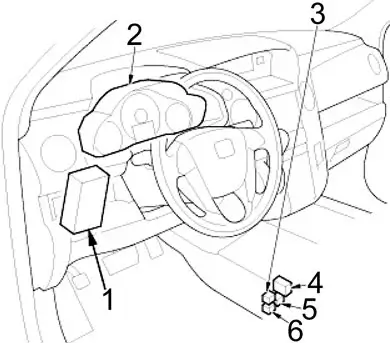There are two power sockets in the center console. "A" in the interior of the armrest box is protected directly by fuse 16 (15A) in the auxiliary under-hood fuse and relay box, while "B" in the rear of the console for second row passengers is protected by fuse 12 (15A) in that same box. Be Sure you are in the correct under-hood fuse and relay box.
Each of the accessory power outlets has a dedicated relay that interrupts current flow to the sockets when the transmission is in park or neutral and (I think when) the starter is engaged. These are identified as "console accessory power socket A relay" and "console accessory power socket B relay", respectively, and are of course buried in the console lower left side, next to each other. If one console outlet is working and one is not, .and. both fuses test good, you can swap the two relays and see if the symptom moves. If -none- of the accessory power outlets is working, all four relay coil circuits are protected by fuse 35 (10A) in the under-dash fuse and relay panel.
Before disassembling the console to check those relays, I'd be replacing the suspect fuse not just testing. The fuses have tiny test-port holes in the back that let you use a needle probe in your multimeter to verify the presence of battery voltage on both sides of each fuse in-circuit. The relay contacts are in circuits between the fuses and the outlets.
If you've been using a high-current device in the suspect socket for an extended time, it's certainly worthwhile looking hard into the socket itself to make sure it isn't damaged by heat from a poor connection. I've seen the tab for the center pin warped by heat, enough to prevent a good contact with the inserted power connector. This often happens when a Euro-style connector is inserted, the one that's a bit smaller than what we colonists like to call a 'standard' plug.





